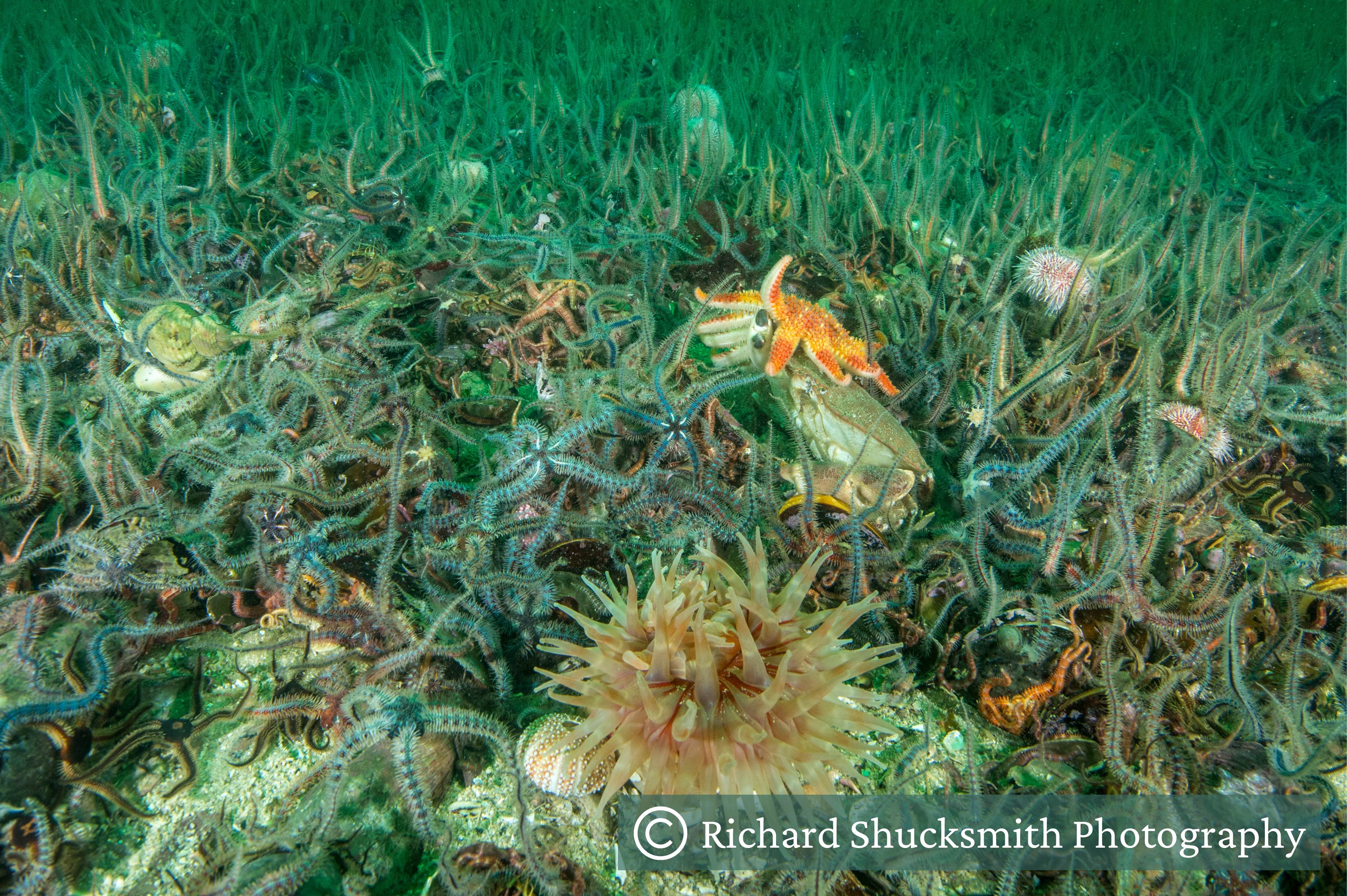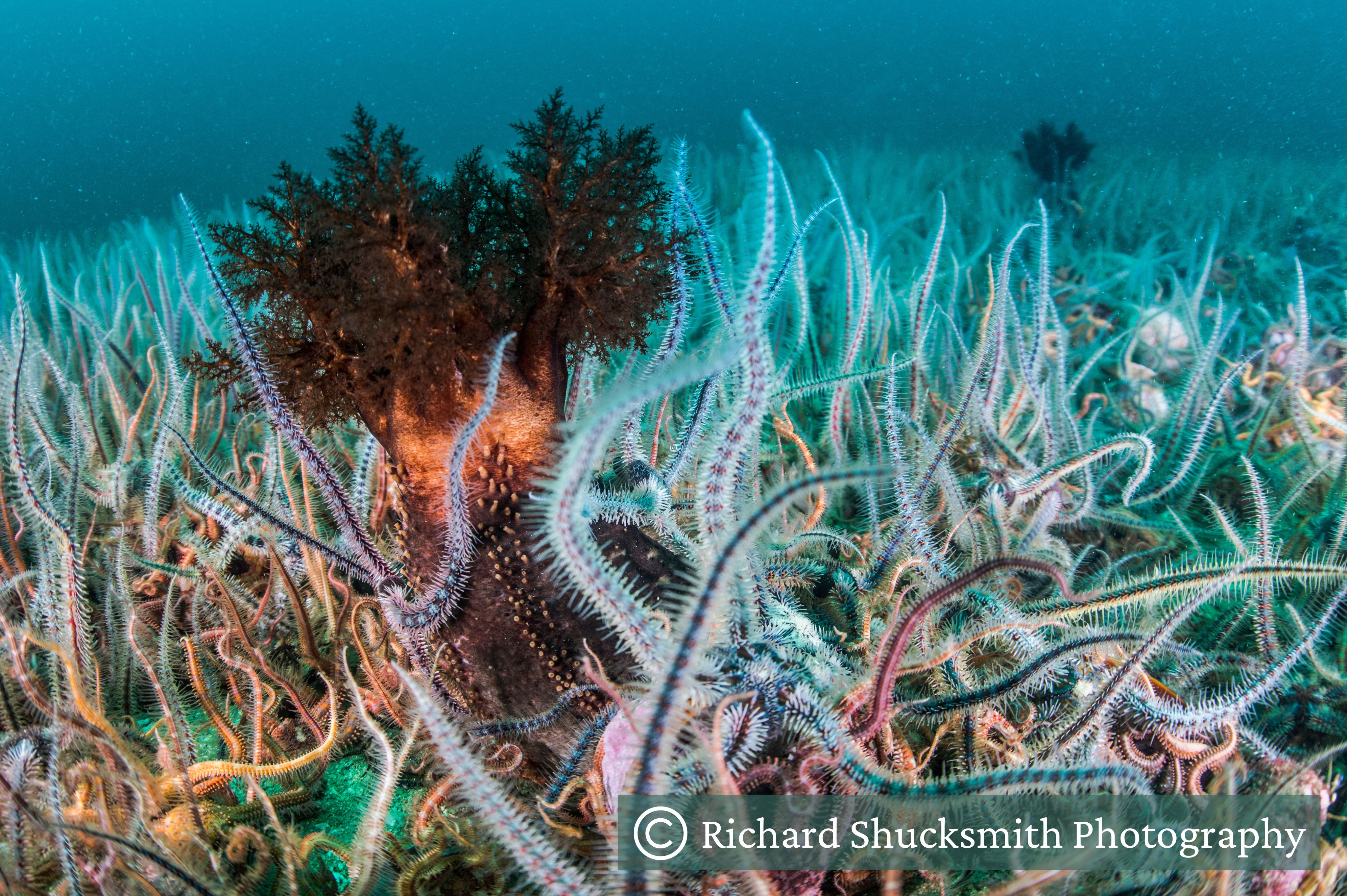Brittlestar Beds

Brittlestar bed audio Photo 1
Brittlestars are relatives of starfish but have a disk like body with thinner and more fragile arms than the big orange common sunstar in the middle of this photo. They wave their spindly arms to filter food from the water but are also able to detach and regrow their arms for protection! The brown crab or parton is their common predator.
Some species of brittlestar can come together to form beds of various sizes, the largest of which can reach over hundreds of square metres in size and contain millions of individuals. Around Yell, these beds are commonly found in tidal areas occurring on top of horse mussel and maerl beds.
Narrated by- Louise Thomason- UHI Shetland

Brittlestar audio photo 2
This large brown sea cucumber is using its tentacles to filter feed and catch food, amongst the bed of brittlestars. Brittlestar beds can look beautiful but also slightly eerie with their legs waving in the current. Brittlestars have skeletons that are made of calcium and carbon. This is important because it helps give them structure and support. It also helps them store carbon. Brittlestars might not seem like they’re doing much, but they’re actually playing an important role in trapping carbon in the ocean. However, scientists are still trying to figure out just how many brittlestar beds there are in the waters around Scotland, which makes it tricky to know exactly how much carbon they’re storing. This makes it difficult to measure just how important their role is in blue carbon storage.
Narrated by- Louise Thomason- UHI Shetland